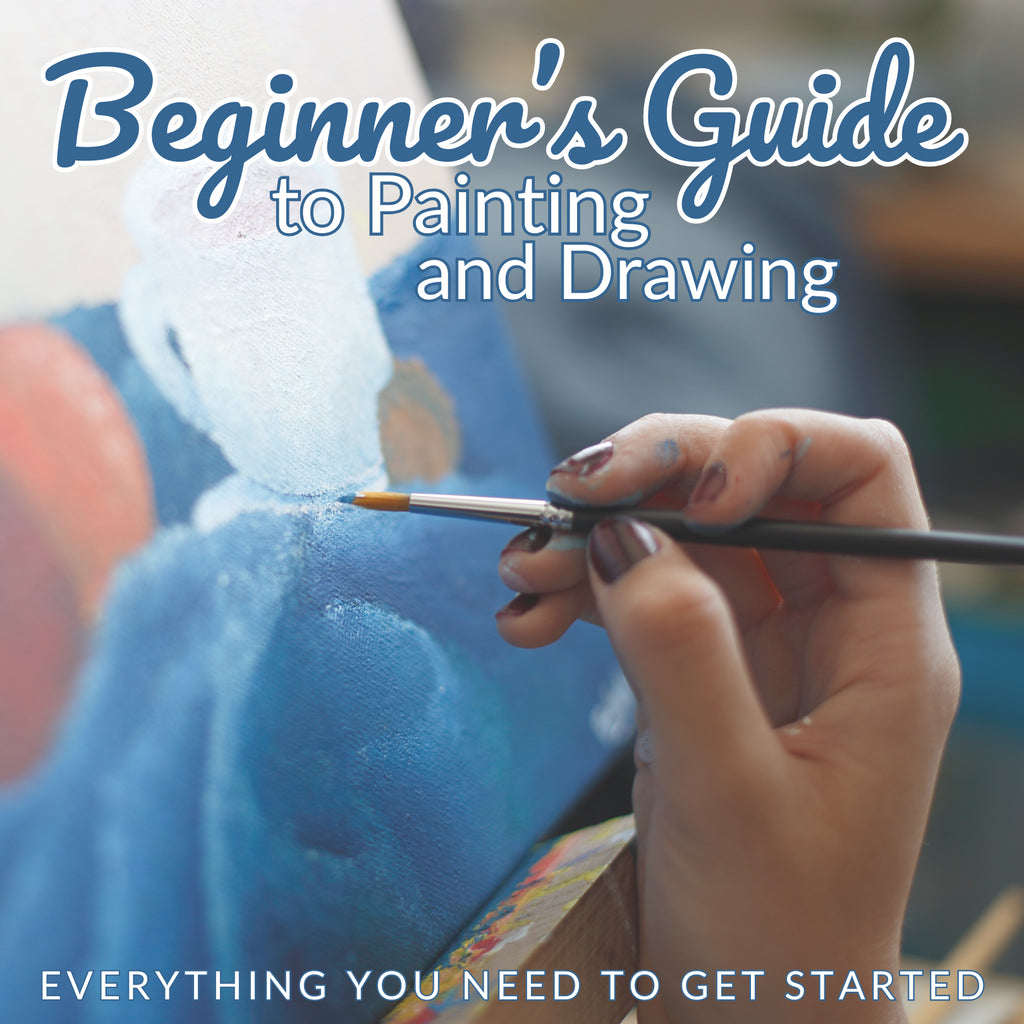Beginner's Guide to Painting and Drawing
Posted by ROLF WILLIAMS

Have you ever felt the urge to pick up a paintbrush or a pencil just to see where your creativity takes you? Whether you’re inspired by sweeping landscapes, colorful abstracts, intricate sketches, or you just want to add something new and personal to your walls, getting started with painting and drawing can be incredibly rewarding. Let’s break it down step by step so you can dive into the world of art with confidence.
The Basics: What Supplies Do You Need?
Starting your artistic journey doesn’t have to mean breaking the bank. Here’s a quick list of essentials to consider for painting and drawing:
For Painting:
1). Paint: Decide on a medium (more on that below). Starter sets of acrylic, oil, or watercolor are great options.
2). Brushes: Invest in a small variety of brush shapes and sizes, ideally suited to your chosen paint type. NOTE: Brushes differ based on bristle material, stiffness, and shape to suit specific painting mediums. Watercolor brushes are soft and absorbent for fluid strokes, acrylic brushes are medium-stiff to handle fast-drying paint, and oil brushes are stiffer to work with thick, slow-drying paint and create texture.
3). Canvas or Paper: Canvases are ideal for acrylic and oil paints, while watercolor paper is essential for watercolors.
4).Palette: A palette is necessary for mixing colors. Acrylic and watercolor artists can use reusable plastic or ceramic palettes, while oils may benefit from a disposable paper palette. Oil paints require solvents to clean, and a disposable palette allows you to simply discard the used surface instead of spending time scrubbing away stubborn paint and residue.
5). Easel: While optional, an easel provides a sturdy, ergonomic surface for painting.
6). Extras: Don’t forget water jars (for acrylics and watercolors), palette knives, and rags or paper towels.
For Drawing:
1). Pencils: A range of graphite pencils (from soft 6B to hard 4H) gives you control over shading and detail. But drawing isn’t just about graphite; there’s a wide variety of tools to explore, like charcoal for bold, dramatic lines, ink for crisp details, and pastels or colored pencils for vibrant, blend-able colors. Each medium offers unique textures and effects, from the softness of chalk to the precision of pens and markers. Experimenting with different tools can help you find your favorite style and technique.
2). Erasers: A kneaded eraser and a standard white eraser work wonders.
3). Paper: Start with sketchbooks or loose drawing paper.
4). Rulers and Stencils: Great for precise lines and shapes.
5). Markers and Colored Pencils: For those looking to add color, art markers and colored pencils are versatile tools.
Painting: Choosing Your Medium
Before you start painting, it helps to understand the differences between the three main types of paint.
Oil Paints:
•Pros: Rich, vibrant colors; excellent for blending; long drying time for detailed work.
•Cons: Requires solvents for cleaning; can be messy.
•Best for: Realistic landscapes, portraits, and any style requiring lots of blending.
Acrylic Paints:
•Pros: Fast drying; versatile; easy to clean with water.
•Cons: Dries quickly, so blending can be challenging for beginners.
•Best for: Bold, modern styles and mixed media art.
Watercolors:
•Pros: Lightweight and portable; creates beautiful translucent effects; easy cleanup.
•Cons: Less forgiving; can’t always fix mistakes.
•Best for: Delicate, layered designs like floral patterns or soft landscapes.
•Pro Tip: If you’re not sure where to start, acrylics are often the most beginner-friendly.
Drawing: Techniques and Tools
Graphite Drawing:
•Focus on Fundamentals: Start with basic shapes and work on your shading. Practice turning circles into spheres by experimenting with light and shadow.
•Keep It Light: Begin with faint lines and build up darker tones gradually.
Art Markers vs. Colored Pencils:
•Art Markers: Known for their vibrant colors and smooth application, markers are ideal for bold, graphic designs or comic-style art. Techniques like layering and blending can create dynamic effects.
•Colored Pencils: These are perfect for detailed, textured work like botanical illustrations or portraits. Practice layering light strokes to build depth and color.
•Pro Tip: No matter the medium, practice makes progress. Fill a sketchbook with studies of everyday objects, focusing on shapes, perspective, and texture.
Don’t forget to experiment! Copying styles from your favorite artists is a great way to learn, but adding your personal touch makes your art uniquely yours.
Final Thoughts: Dive In and Keep Practicing
The beauty of art is that it’s a journey, not a destination. Give yourself grace as you learn, and remember—even the masters started with a blank canvas.
Ready to begin? Click here to explore art sets well suited for both beginners and professionals to help you bring your artistic dreams to life.


